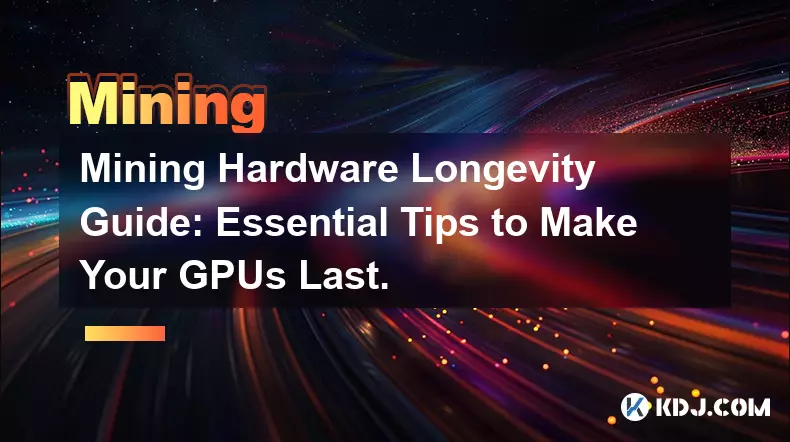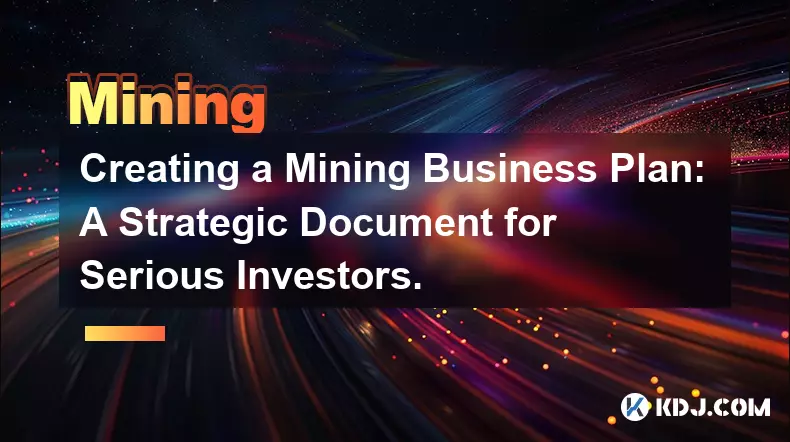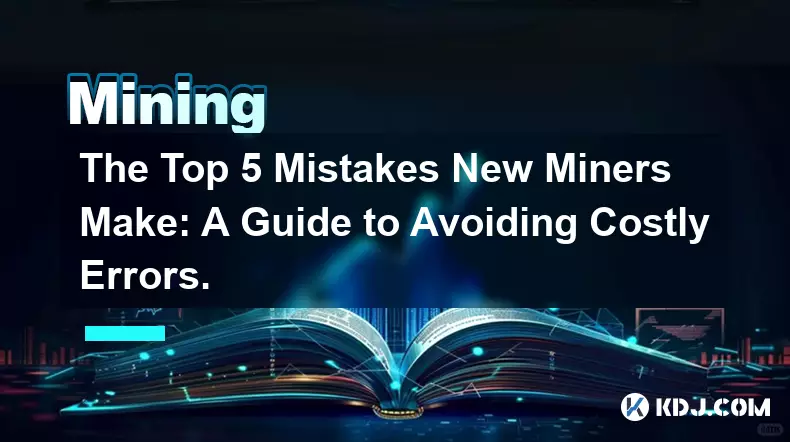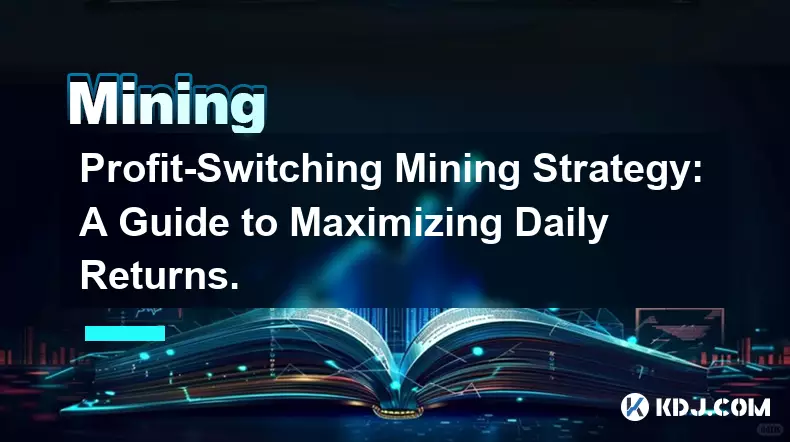-
 bitcoin
bitcoin $99177.955738 USD
-7.32% -
 ethereum
ethereum $3187.183061 USD
-12.38% -
 tether
tether $0.999809 USD
0.00% -
 xrp
xrp $2.117933 USD
-9.42% -
 bnb
bnb $906.710033 USD
-9.17% -
 solana
solana $149.367737 USD
-10.74% -
 usd-coin
usd-coin $0.999816 USD
0.01% -
 tron
tron $0.281498 USD
-0.38% -
 dogecoin
dogecoin $0.156292 USD
-8.00% -
 cardano
cardano $0.500744 USD
-10.19% -
 hyperliquid
hyperliquid $38.087358 USD
-4.58% -
 chainlink
chainlink $14.097831 USD
-8.54% -
 bitcoin-cash
bitcoin-cash $463.329916 USD
-9.22% -
 ethena-usde
ethena-usde $0.999078 USD
-0.01% -
 unus-sed-leo
unus-sed-leo $9.475862 USD
-0.79%
How to mine with a CPU and GPU simultaneously?
Simultaneous CPU and GPU mining maximizes hardware use, especially with CPU-friendly algorithms like RandomX, but requires compatible software, proper cooling, and careful configuration for stability and efficiency.
Oct 30, 2025 at 04:00 pm

Understanding Simultaneous CPU and GPU Mining
1. Modern cryptocurrency mining leverages computational power from various hardware components, with GPUs and CPUs being the most accessible options for individual miners. While GPUs dominate in hash rate performance due to their parallel processing architecture, CPUs still hold relevance, especially in algorithms designed to resist ASIC dominance. Running both devices in tandem allows users to maximize resource utilization without discarding older or less powerful equipment.
2. To mine using both a CPU and GPU simultaneously, one must select mining software that supports multi-device operations. Applications like XMRig, which is widely used for Monero (XMR) mining, offer built-in capabilities to engage both processing units. Configuration files in such software can be manually edited to allocate threads to the CPU while assigning GPU-specific parameters such as intensity, memory clock, and compute mode settings.
3. The operating system plays a critical role in managing hardware access. On Windows, proper installation of GPU drivers—especially for NVIDIA (via CUDA) and AMD (via OpenCL)—ensures smooth communication between the miner and graphics card. Linux environments often provide more granular control, particularly when optimizing power states and thermal throttling behavior during extended mining sessions.
4. It's essential to monitor system stability when running both components under load. Excessive heat or power draw may lead to crashes or reduced lifespan of components. Tools like HWiNFO or MSI Afterburner help track temperature, usage percentage, and power consumption across CPU and GPU, enabling real-time adjustments to prevent hardware stress.
Selecting Compatible Cryptocurrencies and Algorithms
1. Not all cryptocurrencies are suitable for combined CPU-GPU mining. Coins based on the RandomX algorithm, such as Monero, are specifically engineered to be CPU-friendly while allowing supplementary GPU involvement. This design choice promotes decentralization by preventing GPU farms from monopolizing the network.
2. Other algorithms like KawPow (used by Ravencoin) or ProgPoW favor GPUs heavily, making CPU contributions negligible. In these cases, dedicating the CPU to system tasks while reserving the GPU for mining yields better efficiency. Miners should research consensus mechanisms and algorithm characteristics before investing time in setup.
3. Privacy-focused coins often adopt CPU-accessible algorithms to lower entry barriers. Beam and Grin utilize the Equihash variant, where CPU mining remains viable depending on the parameter set. However, simultaneous operation with GPU requires careful tuning to avoid memory allocation conflicts.
4. Pool selection influences profitability when combining resources. Mining pools that support merged mining or accept partial shares from heterogeneous setups ensure that both CPU and GPU contributions are accounted for in reward distribution.
Optimizing Performance and Resource Allocation
1. Configuration files in mining software dictate how workloads are split. For example, in XMRig, the cpu_threads directive assigns cores to mining tasks, while the cuda_benchmark and opencl_threads settings define GPU engagement. Users must balance thread count against system responsiveness, particularly if the machine runs additional services.
2. Overclocking the GPU can boost hash rates but increases power consumption and heat output. Conservative overclocks paired with undervolting often deliver better efficiency than aggressive profiles. CPUs benefit less from overclocking in mining due to thermal constraints and instruction pipeline limitations.
3. Background processes compete for memory bandwidth and CPU cycles. Disabling unnecessary startup programs, setting process priority to high, and allocating sufficient virtual memory improve mining consistency. Some advanced users run lightweight Linux distributions dedicated solely to mining to eliminate overhead.
4. Power management settings in the BIOS and OS should be adjusted to prevent throttling. Enabling 'High Performance' mode in Windows or setting CPU governor to 'performance' in Linux ensures consistent clock speeds during mining operations.
Frequently Asked Questions
Can I use different mining software for CPU and GPU at the same time?Yes, running separate instances—one for CPU (e.g., XMRig) and another for GPU (e.g., GMiner or TeamRedMiner)—is possible. Ensure port conflicts are avoided and system resources aren't overwhelmed by concurrent processes.
Does simultaneous mining reduce hardware lifespan?Continuous full-load operation generates heat and wear. Proper cooling, dust management, and periodic maintenance mitigate risks. Most consumer-grade hardware tolerates moderate mining durations if thermals stay within safe limits.
Is it profitable to mine with both CPU and GPU today?Profitability depends on electricity cost, coin value, and hardware efficiency. Most CPU-GPU setups break even or yield small returns unless powered by low-cost or renewable energy. Mining less competitive altcoins may offer better margins than mainstream options.
How do I know if my GPU is actually contributing?Check the miner’s output log for detected devices. A properly configured GPU will display its model, driver version, and hash rate. If only CPU activity appears, verify OpenCL/CUDA installation and ensure the GPU isn’t blacklisted in the config file.
Disclaimer:info@kdj.com
The information provided is not trading advice. kdj.com does not assume any responsibility for any investments made based on the information provided in this article. Cryptocurrencies are highly volatile and it is highly recommended that you invest with caution after thorough research!
If you believe that the content used on this website infringes your copyright, please contact us immediately (info@kdj.com) and we will delete it promptly.
- Bitcoin's Wild Ride: Saylor, Kiyosaki, and the Quest for $200K
- 2025-11-05 10:50:13
- Culex, Cardano, and Aster: A Crypto Cocktail of Mosquitoes, Dips, and CZ Fuel
- 2025-11-05 11:00:17
- Crypto Presales, Coin Growth, and Established Coins: Navigating the 2025 Buzz
- 2025-11-05 11:00:17
- La Culex, Crypto Investment, and Pudgy Penguins: A NYC Perspective
- 2025-11-05 10:30:13
- Zcash Defies Crypto Crash: Reversal Risk on the Horizon?
- 2025-11-05 11:00:01
- Score Big with BetMGM: NBA, NFL, and the TOP150 Bonus Code
- 2025-11-05 08:50:13
Related knowledge

Mining Hardware Longevity Guide: Essential Tips to Make Your GPUs Last.
Nov 01,2025 at 04:00pm
Mining Hardware Longevity Guide: Essential Tips to Make Your GPUs LastAs cryptocurrency mining continues to attract both hobbyists and professionals, ...

Creating a Mining Business Plan: A Strategic Document for Serious Investors.
Nov 04,2025 at 08:54pm
Defining the Core Objectives of a Cryptocurrency Mining Venture1. Establishing a clear mission for the mining operation ensures alignment with investo...

The Top 5 Mistakes New Miners Make: A Guide to Avoiding Costly Errors.
Nov 01,2025 at 10:18am
The Top 5 Mistakes New Miners Make: A Guide to Avoiding Costly Errors Entering the world of cryptocurrency mining can be both exciting and overwhelmin...

The Miner's Guide to Market Cycles: When to Hold and When to Sell.
Nov 03,2025 at 07:55pm
The Miner's Guide to Market Cycles: When to Hold and When to Sell Bitcoin mining has evolved from a hobbyist pursuit into a highly competitive, capita...

Profit-Switching Mining Strategy: A Guide to Maximizing Daily Returns.
Nov 03,2025 at 11:55am
Understanding Profit-Switching in Cryptocurrency Mining1. Profit-switching is a dynamic mining strategy that automatically redirects computational pow...

Setting Up Mining Alerts: A Guide to Monitoring Your Rigs 24/7.
Nov 03,2025 at 02:54pm
Why Continuous Monitoring Is Crucial in Cryptocurrency Mining1. Cryptocurrency mining operations rely heavily on hardware stability and network connec...

Mining Hardware Longevity Guide: Essential Tips to Make Your GPUs Last.
Nov 01,2025 at 04:00pm
Mining Hardware Longevity Guide: Essential Tips to Make Your GPUs LastAs cryptocurrency mining continues to attract both hobbyists and professionals, ...

Creating a Mining Business Plan: A Strategic Document for Serious Investors.
Nov 04,2025 at 08:54pm
Defining the Core Objectives of a Cryptocurrency Mining Venture1. Establishing a clear mission for the mining operation ensures alignment with investo...

The Top 5 Mistakes New Miners Make: A Guide to Avoiding Costly Errors.
Nov 01,2025 at 10:18am
The Top 5 Mistakes New Miners Make: A Guide to Avoiding Costly Errors Entering the world of cryptocurrency mining can be both exciting and overwhelmin...

The Miner's Guide to Market Cycles: When to Hold and When to Sell.
Nov 03,2025 at 07:55pm
The Miner's Guide to Market Cycles: When to Hold and When to Sell Bitcoin mining has evolved from a hobbyist pursuit into a highly competitive, capita...

Profit-Switching Mining Strategy: A Guide to Maximizing Daily Returns.
Nov 03,2025 at 11:55am
Understanding Profit-Switching in Cryptocurrency Mining1. Profit-switching is a dynamic mining strategy that automatically redirects computational pow...

Setting Up Mining Alerts: A Guide to Monitoring Your Rigs 24/7.
Nov 03,2025 at 02:54pm
Why Continuous Monitoring Is Crucial in Cryptocurrency Mining1. Cryptocurrency mining operations rely heavily on hardware stability and network connec...
See all articles










































































